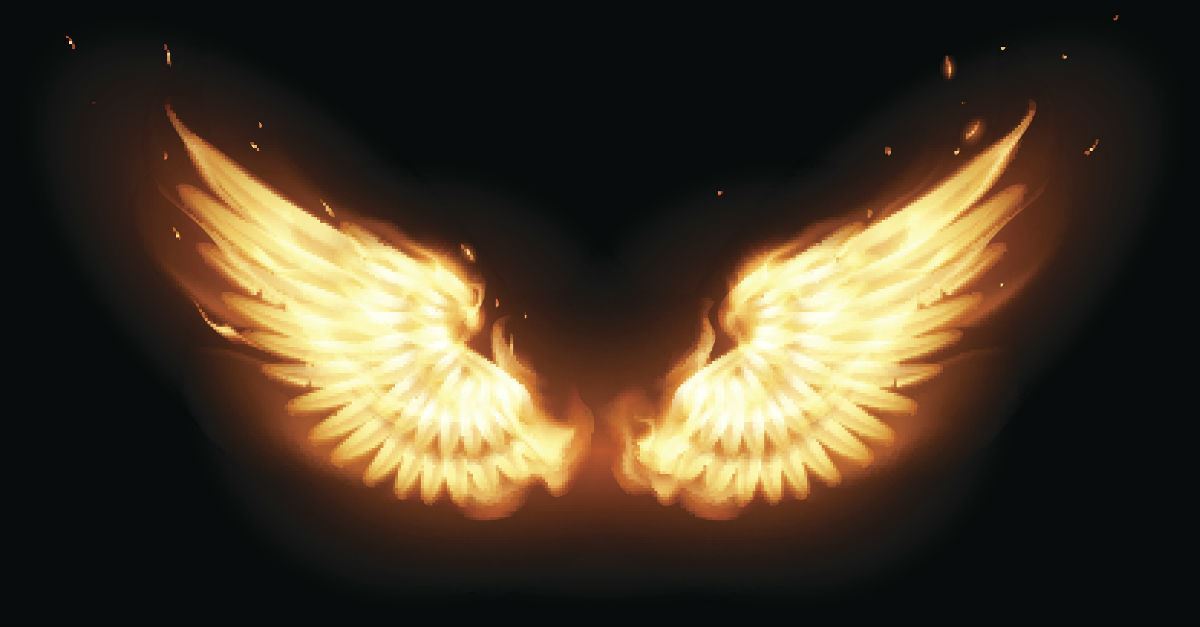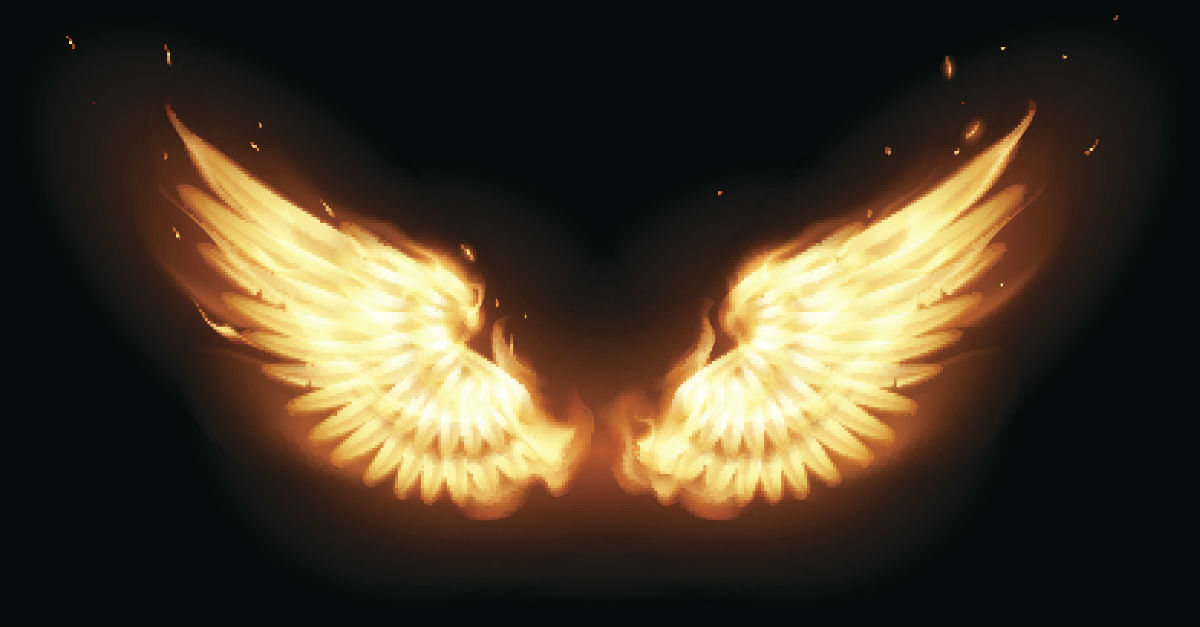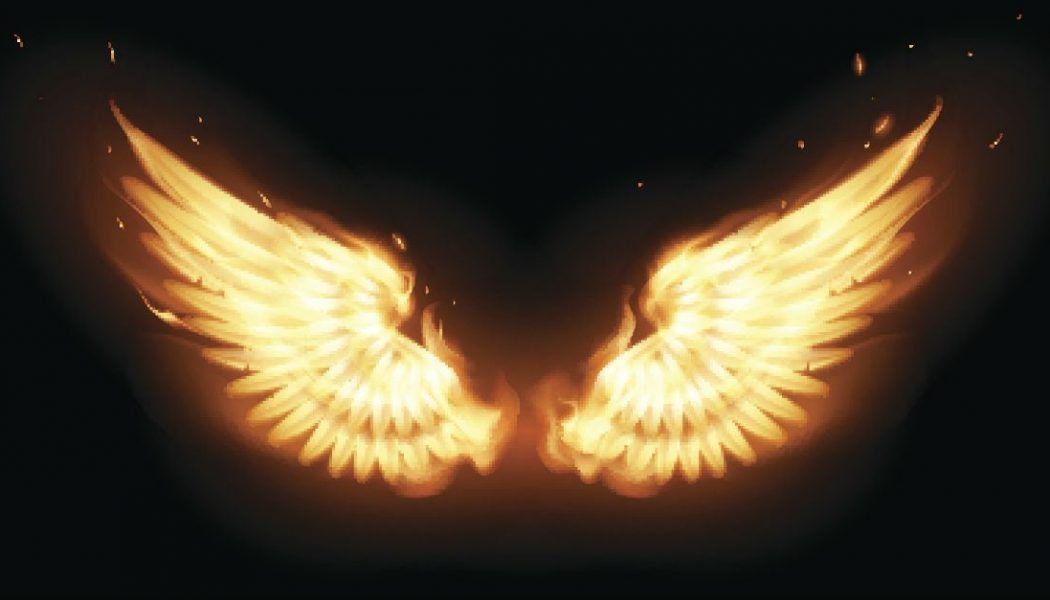
The prophet Isaiah tells us that the seraphim are six-winged “fiery” angels who surround God as He sits upon His exalted throne and who worship God continually (Isaiah 6). The seraphim also minister to the Lord and serve as His agents of purification, as demonstrated by their cleansing of Isaiah’s sins before he began his prophetic ministry.
Seraphim Angels in the Bible: 4 Things to Know
1. The word “seraphim” in the Bible appears only in Isaiah chapter 6.
Isaiah 6 is the only passage in the Bible that specifically mentions the word “seraphim,” meaning “the fiery ones.” In that Biblical chapter, Isaiah describes his intense vision of God’s heavenly court. Namely, the prophet saw God seated on an exalted throne surrounded by flying angels called the “seraphim” (Isaiah 6:1-2).
The word “seraphim” is the plural form of the Hebrew root word “saraph,” which means, “to burn.” The implication here is that these attendant angels burn with love for God. The seraphim seem to bear a resemblance to humans, as Isaiah describes them as having faces, feet, hands, and voices (Isaiah 6:2-7).
2. The seraphim are fiery angels who revere God and proclaim His supreme glory.
In Isaiah’s vision, the seraphim repeatedly proclaim God’s supreme holiness and glory. (Isaiah 6:3). The seraphim do not address God directly but call out to each other in God’s presence: “And they were calling to one another: ‘Holy, holy, holy is the LORD Almighty; the whole earth is full of his glory.’” (Isaiah 6:3).
To be “holy” means to be set apart and seen as sacred. This thrice invocation of the word “holy” to describe God’s sacred nature appears only two times in the Bible, and both times is spoken by angels to someone transported in a vision to the throne of God.
(The other passage containing this thrice invocation of God’s holiness is found in Revelation 4:8, which also refers to six-winged angels surrounding God’s heavenly throne and constantly declaring God’s glory.)
3. The trihagion—the thrice invocation of “holy”—in the seraphim’s worship of God is significant.
The fact that the seraphim in Isaiah’s vision use a three-fold repetition of God’s holiness—called the trihagion—is significant. In ancient Judaism, the number “three” signified completeness and stability, here connoting God’s wholeness as the beginning, the middle, and the end. Announcing God’s holiness three times also connotes:
- God’s eternal nature, which is the same yesterday, today, and forever (Hebrews 13:8);
- God’s divine perfection as seen in the Holy Trinity: the Father, the Son, and the Holy Spirit; and
- God’s complete and supreme holiness, unmatched by anything or anyone else.
Isaiah goes on to describe the effect of the seraphim’s proclamation, telling us that at the sound of the angel’s voices asserting God’s magnificence, “the doorposts and thresholds shook, and the temple was filled with smoke” (Isaiah 6:4). In Biblical times, earthquakes and smoke were signs of God’s divine presence. (Exodus 19:18; Psalm 104:32).
4. The seraphim also minister to God and serve as His agents of purification.
When Isaiah noticed that the heavenly seraphim covered themselves before God to acknowledge their unworthiness before the Lord, the prophet became aware of his own mortal sinfulness and feared for his life. At that point, one of the seraphim picked up a burning coal “with tongs from the altar,” brought the live coal to Isaiah, and touched it to Isaiah’s lips. (Isaiah 6:6-7). This act purified Isaiah’s sins by fire, as the seraph assured Isaiah that now his “guilt is taken away and [his] sin atoned for.” (Isaiah 6:7).
With his sins cleansed, Isaiah could now speak directly to God. When God called out for a prophet— “Whom shall I send? And who will go for us?”—the “purified” Isaiah was able to accept this prophetic comission to the people of Israel by responding— “Here am I. Send me!” (Isaiah 6:8).
Seraphim Wings: Their Meaning and Significance
Each of the seraphim is described as having six wings: two wings used to cover their face, two wings used to cover their feet, and the remaining two used to fly.
Two Wings to Cover Their Faces
One reason the seraphim may use four of their six wings to cover themselves is to express their humility before God. In particular, these burning angels may use a pair of wings to cover their faces to show God reverence, considering themselves unworthy to look upon the face of God and also in obedience to the Lord’s admonition that no one may see His face and live (Exodus 33:20).
Two Wings to Cover Their Feet
The fact that the seraphim also use a second pair of wings to cover their feet may further display reverence for God in that the angels may be refusing to reveal any unclean aspects of their being before the Lord.
Two Wings to Fly
The seraphim use their remaining two wings to fly and wait upon God. This detail Isaiah gives us of the seraphim using the majority of their six wings to venerate God and the remaining two wings to serve God may signify that we, as the faithful, serve God best when we make veneration of Him our top priority.
Sources:
- Biblestudytools.com, New International Version.
- Biblestudytools.com, Easton’s Bible Dictionary’s definition of “seraphim.”
- Biblehub.com, Hebrew definition of “saraph.”
- Crosswalk.com, What it Means to be “Holy for I Am Holy” – Bible Study Minute – February 1, 2019, Aretha Grant.
- Myjewishlearning.com, Judaism and Numbers, Rabbi Geoffrey Dennis.
- Gotquestions.org, What does it mean that God is holy, holy, holy?, The Editors.
Dolores Smyth’s work has appeared in numerous parenting and faith publications. A perfect day for her includes running, reading, and spending time with her husband and three kids. You can find her on Twitter @LolaWordSmyth.
Photo Credit: GettyImages/d1sk










